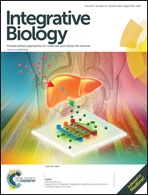Modeling of the mechano-chemical behaviour of the nuclear pore complex: current research and perspectives
Abstract
Recent evidence suggests that mechanical deformation of the cell nucleus regulates the nuclear import of the transcriptional activators of genes involved in primary physiological cell responses such as stem cell differentiation. In addition, this nuclear mechanosensing response is de-regulated in pathological states, such as cancer and neurodegeneration. One hypothesis that could greatly advance the field is that the deformation of the nuclear envelope activates nuclear pore complexes through a direct mechanical link. The understanding of this possible mechanism for nuclear pore complex stretch-activation entails studying the mechanical connection of this complex to the nuclear envelope at the nanoscale. The nanomechanics of the nuclear pore complex is thus emerging as a novel research field, bridging nanoscience with nanotechnology. This review examines the frontier of research methodologies that are potentially useful for building a computational model of this interaction. This includes, for example, electron tomography to assess the geometrical features of the nuclear pore complex and nanoindentation to estimate its mechanical properties and that of the nuclear envelope. In order to summarize the state-of-the-art and perspectives in the field of NPC nanomechanics, this review covers highly interdisciplinary experimental and theoretical research methodologies pertaining to the fields of physics, chemistry, biology, materials and mechanics.


 Please wait while we load your content...
Please wait while we load your content...